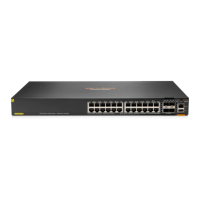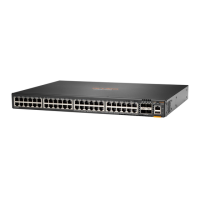77
[Device] interface ten-gigabitethernet 1/0/2
[Device-Ten-GigabitEthernet1/0/2] port link-aggregation group 1
[Device-Ten-GigabitEthernet1/0/2] quit
Verifying the configuration
# Display detailed information about all aggregation groups on the device when the server is not
configured with dynamic link aggregation.
[Device] display link-aggregation verbose
Loadsharing Type: Shar -- Loadsharing, NonS -- Non-Loadsharing
Port Status: S -- Selected, U -- Unselected, I -- Individual
Port: A -- Auto port, M -- Management port, R -- Reference port
Flags: A -- LACP_Activity, B -- LACP_Timeout, C -- Aggregation,
D -- Synchronization, E -- Collecting, F -- Distributing,
G -- Defaulted, H -- Expired
Aggregate Interface: Route-Aggregation1
Aggregation Mode: Dynamic
Loadsharing Type: NonS
Management VLANs: None
System ID: 0x8000, 000f-e267-6c6a
Local:
Port Status Priority Index Oper-Key Flag
XGE1/0/1 I 32768 11 1 {AG}
XGE1/0/2 I 32768 12 1 {AG}
Remote:
Actor Priority Index Oper-Key SystemID Flag
XGE1/0/1 32768 81 0 0x8000, 0000-0000-0000 {DEF}
XGE1/0/2 32768 82 0 0x8000, 0000-0000-0000 {DEF}
The output shows that Ten-GigabitEthernet 1/0/1 and Ten-GigabitEthernet 1/0/2 are in Individual
state when they do not receive LACPDUs from the server. Both Ten-GigabitEthernet 1/0/1 and
Ten-GigabitEthernet 1/0/2 can forward traffic. When one port fails, its traffic is automatically switched
to the other port.

